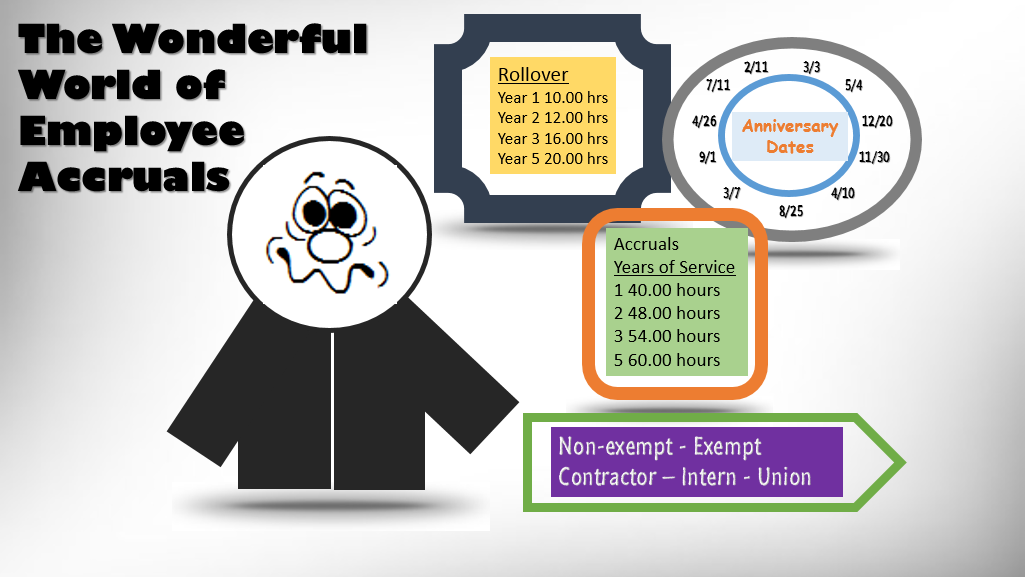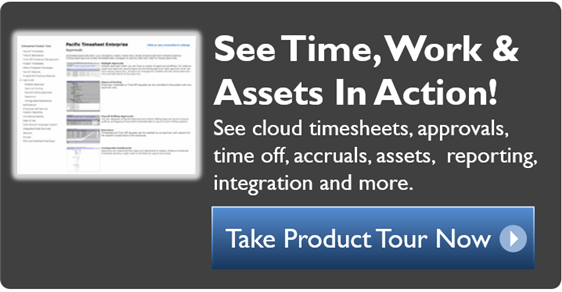
Superpowers would be a welcome gift for managers who have to keep track of employee time off. They could clone three replicas of themselves, one for the calendar year, another for the fiscal year and a third for the employee-anniversary year. They could time-travel from holiday to holiday, magically paying everyone who'd earned holiday pay -- and double time for union workers. They could predict the future and know who would need military leave or protected medical leave, and when.
Modern time tracking and leave accrual technology have brought superpower-like abilities to payroll managers. But before software saved the day, HR professionals relied on calculators, spreadsheets and patience to navigate the maze of leave accrual rules.
History of paid time off
Compared to the rest of the world, US employers are miserly when it comes to giving employees paid time off. In the 1930s, the federal Committee on Vacations With Pay studied the typical American worker's vacation schedule. Back in 1910, President Taft had touted the idea of an annual vacation that would provide employees with the energy to work another productive year, yet the US lagged behind other nations when it came to mandating paid vacations.
Workers in Europe, South America and Asia have required employers to provide paid vacations since the early twentieth century. In the 1930s, Swedish and German workers accrued seven to 12 weeks of paid time off every year. In the '60s and the '70s, Australia and Brazil implemented laws mandating paid vacation, and at least 30 countries have adopted similar policies.
Vacation pay for US laborers
Fortunately for the US work force, organized labor made vacation time for every worker a collective bargaining goal. Despite the lack of a legally imposed paid vacation mandate, many American employers provided paid vacation for their employees either voluntarily or because union contracts required them to.
As the Great Depression ended and domestic oil production began, thousands of oil, gas and refinery workers enjoyed paid vacations. Teamsters and steelworkers were also given paid time off. By the time World War II began, half of American industrial workers received some form of paid vacation time.
Behind the scenes, payroll clerks performed the tedious manual task of recording hours, weeks and years worked, time accrued, time taken and time paid. Bookkeepers wrote the checks for vacation pay, managers signed them and employees cashed them. The cycle repeated itself year after year.
Automation leads to outsourcing
The dawn of the computer age brought automation to the payroll profession. Mainframe computers and punch card machines made fast work of tasks that once took days to perform. Companies that couldn't afford room-sized mainframes outsourced their payroll processing to vendors whose only business was human resource management.
By the 1990s, full-time private industry workers enjoyed ten paid holidays per year. They earned from 8 to 18 days of vacation per year and 10 to 17 days of sick leave. Employers awarded time based on tenure with the organization, making service dates and anniversaries an important part of the vacation pay equation.
With affordable personal computers and user-friendly Windows software, businesses of the 1990s could afford to bring the payroll function back in house. The number of software solutions exploded, with a handful of major players surviving the dot-com crash of the early 2000s.
Modern payroll technology
Payroll systems have grown more complex over time, and so have the different types of paid time off they must track. An employee in the contemporary work force has many ways to get paid without working.
- Holidays, including floating holidays, allow employers to save money by giving the entire workforce off on traditional holidays.
- Vacation days continue to be a favorite among employees.
- Sick leave helps prevent the spread of illness at the jobsite by encouraging workers to stay home when they're sick.
- Consolidated leave lets employees divide their time between sick leave, vacation and other needs as they see fit.
- Bereavement leave gives workers much needed time off to attend a funeral and take care of family business when a relative dies.
- Jury duty leave pays employees for performing their civic duty of serving on a jury.
- Military leave allows members of the Armed Forces to serve their country on reserve or active duty while holding a private sector job.
- Protected medical leave provides needed time off to treat a serious illness or recover from a temporary disability.
- State-specific leave provides benefits for residents in certain locations. In Oregon, for example, a parent may take up to 12 weeks per year of "sick child" leave. In the District of Columbia, employers must provide leave for workers, including part-time and temporary staff, who have illnesses, medical appointments or absences due to sexual abuse or domestic violence.
Modern systems
Today's sophisticated data systems make it easier than ever for payroll managers to comply with leave accrual rules. Cloud-based computing enables workers to request leave with their desktop computers and mobile devices. Payroll workers don't have to be at the office to manage leave requests. They can track leave accruals for employees who work at multiple locations as they work from home or virtually any other location with Internet access.
Time tracking software has come a long way from the days of manual payroll processing. Contemporary time off management software solutions may not transform payroll managers into superheroes, but they might make them feel like they possess a superpower or two.




